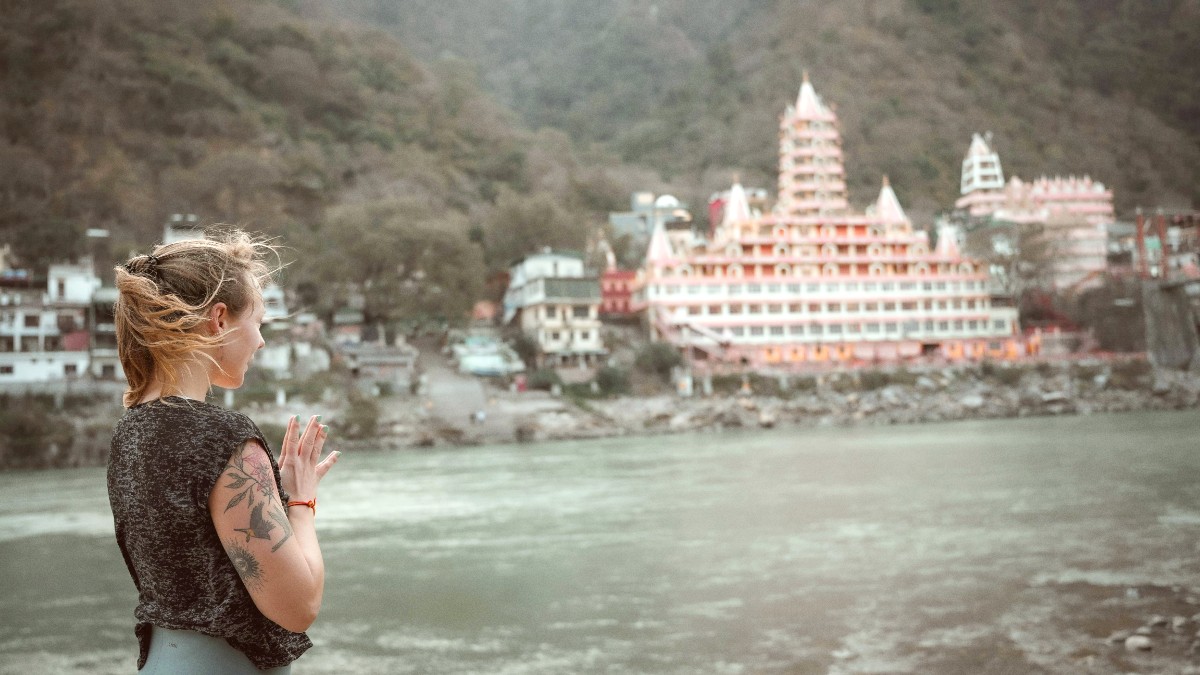
Uttarakhand Uttaranchal, India
Haridwar, a Hindu pilgrimage city, almost exclusively serves vegetarian cuisine. Non-vegetarian food and alcohol are generally absent from the main city area, specifically near temples and ghats. This practice stems from beliefs in sanctity and Ahimsa.
Many establishments near religious sites serve "pure vegetarian" or "Satvik" food, prepared without onion and garlic. The focus is on clean, wholesome, and spiritually pure meals.
Local cuisine relies on fresh vegetables (potatoes, cauliflower, peas, spinach, gourds), various lentils (dals), paneer (Indian cheese), rice, and wheat (for breads).
Haridwar's food is known for rich, aromatic, mildly spicy flavors. Common spices: turmeric, cumin, coriander, cardamom, cloves, bay leaves. Ghee adds distinct richness. Food tends to be comforting and hearty.
Local cuisine draws influence from traditional Uttar Pradesh and Uttarakhand culinary practices. Focus stays on simple, wholesome, traditional Indian vegetarian fare. No distinct "regional variations" within Haridwar itself, just a consistent theme of vegetarian, often Satvik, cooking.
A quintessential breakfast item. Deep-fried, fluffy Indian bread (puri) served with a flavorful, often mildly spiced, potato curry (aloo sabzi).
Find it: Widely available at almost all local eateries, small restaurants, and street food stalls, especially in mornings.
A fried pastry, typically filled with spiced lentils (dal kachori) or spiced potatoes (aloo kachori), served hot with a potato curry or tamarind chutney.
Find it: Popular street food found at numerous stalls and small shops.
A hearty and popular North Indian dish consisting of spicy chickpea curry (chole) served with large, fluffy, deep-fried bread (bhature).
Find it: Available at many mid-range restaurants and larger eateries specializing in Punjabi cuisine.
A broad category of savory snacks, often tangy, spicy, and sweet. Includes Aloo Tikki (spiced potato patties) and Pani Puri (crispy puris with spiced water).
Samosas are triangular fried pastries with spiced potatoes and peas. Pakoras are deep-fried fritters of various vegetables in chickpea flour batter.
Fine dining remains limited in Haridwar. Some upscale hotels, like Radisson Blu Hotel Haridwar, present multi-cuisine restaurants with a more refined experience. These focus on North Indian and sometimes international vegetarian dishes.
Numerous family-friendly restaurants span the city. They feature extensive menus with North Indian, South Indian (dosas, idlis), and sometimes limited Chinese or Continental vegetarian options. "Chotiwala" is a famous, iconic restaurant, noted for its traditional Indian thalis.
Bara Bazaar, a bustling market for goods, also a spot for numerous street food vendors and small eateries (dhabas). These are ideal for quick, inexpensive, and flavorful meals. International cuisine options are very limited; the focus is almost exclusively on Indian vegetarian fare. Larger hotels sometimes feature multi-cuisine menus.
Look for vendors with high customer turnover. This often indicates fresh food.
Eat where locals eat for authentic flavors.
Always carry hand sanitizer, especially when trying street food. This maintains hygiene when soap and water are not readily available.
Prioritize hand hygiene for a comfortable dining experience.
Local food delivery apps for convenience.
Restaurant reviews and recommendations.
Find nearby eateries and directions.
Search for local Haridwar food blogs.
This can be challenging. Many common Indian breads (roti, naan, puri, bhature) contain wheat flour. Rice-based dishes (steamed rice, biryani, dosa, idli) are generally gluten-free.
Specify "no wheat" when ordering.
The concept of "gluten-free" may not be widely understood by all restaurant staff. Communicate about specific ingredients. For example, ask "Gehun nahi hai?" (Is there no wheat?) or "Maida nahi hai?" (Is there no refined flour?).
Clear communication is .
Clearly communicate any severe allergies (e.g., nuts, dairy, soy). Write down your allergies in Hindi on a card to show to restaurant staff. This lessens misunderstandings.
It is better to communicate about specific ingredients rather than relying on generic dietary labels. Your direct communication remains useful.
Formal cooking classes remain limited in Haridwar. Some ashrams or guesthouses might present informal cooking demonstrations as part of a cultural program.
Some local guides lead informal food walks, especially near the Bara Bazaar area. These walks present street food specialties, local sweets, and traditional eateries, giving a view of the city's culinary heritage.
Farm visits or tours to food production facilities remain uncommon tourist activities in Haridwar. The city mainly focuses on pilgrimage and urban life.
Drink only bottled water or water from a trusted filtration source. Avoid tap water.
Stay hydrated safely.
A simple "Dhanyawad" (Thank you) after a meal is always appreciated.
Show gratitude for hospitality.
Farm visits or tours to food production facilities remain uncommon tourist activities in Haridwar. The city mainly focuses on pilgrimage and urban life.
Haridwar hosts no dedicated food festivals. However, during major religious festivals, special foods are prepared and distributed as part of celebrations. Experiencing these festive foods a cultural highlight.
Alcohol is generally prohibited in the main city area of Haridwar due to its religious status. Bars or liquor shops are absent in central Haridwar.
Always carry hand sanitizer, especially when trying street food. It maintains hygiene when soap and water are not readily available.